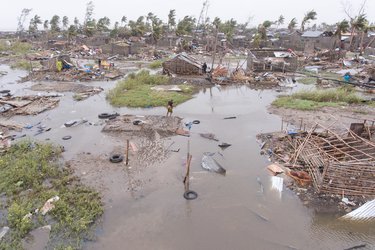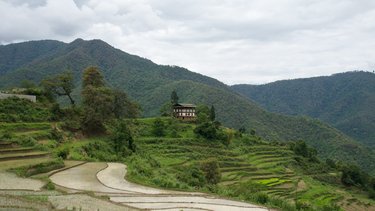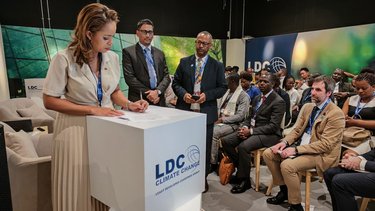

The Least Developed Countries (LDC) Initiative for Effective Adaptation and Resilience (LIFE-AR) aims to enhance climate resilience by promoting a shift in how climate responses are prioritised, financed, coordinated and evaluated.
The LDC-led, LDC-owned initiative is a pathway to realising the LDC 2050 Vision for a climate-resilient future. It is in line with LDC needs and priorities and in support of the Paris Agreement.
Climate change poses an urgent and unique threat to the LDCs. While they emit low levels of carbon dioxide, LDCs are already experiencing devastating impacts , such as erratic rainfall, flooding, drought and crop failure, affecting the daily lives of millions of people. To adapt requires local capacities, a long-term approach and financial support. This is, however, still lacking.
Studies show that between 2016-2021 less than 5% of total public adaptation finance reached the LDCs. And when adaptation finance is available, it is often short-term, top-down and project or sector-specific.
In addition, climate responses are typically defined and led externally and not by LDCs themselves, limiting opportunities for long-term capacity building and the development of sustainable systems.

To reshape the climate finance landscape, LIFE-AR was launched at COP 24 in 2018 by the LDC Chair to compile a robust review of evidence on adaptation and resilience interventions to date. Guided by a network of LDC Advisers, practitioners and resilience partners, the evidence review builds on ongoing initiatives and has informed the LDC Vision, the LDCs Asks and Offers, and the “Business Unusual” approach, which all defined the LIFE-AR design and principles.
LIFE-AR became a vehicle for the concrete implementation of this Vision and invited LDC countries to participate as “Front Runners”. Six countries joined LIFE-AR initially: Bhutan, Burkina Faso, Ethiopia, Malawi, The Gambia and Uganda. Benin, Madagascar, Nepal and Senegal joined in 2023 during COP 28.
The LDC Vision established a principles-based partnership between the LDCs and development partners. The LDCs invite the international community to collaborate in realising their vision, recognising the need for cooperation to tackle the climate crisis. The LIFE-AR Compact is the result of this vision. It is built on the five LIFE-AR principles based on the values of inclusion, participation, justice, equity and leaving no one behind. As of September 2024, it has been signed by 11 development partners and ten LDCs.

LIFE-AR aims to achieve the LDC Vision for resilient people, economies and landscapes. The initiative focuses on strengthening governance systems and ensuring that climate finance reaches the communities most affected by climate impacts. In the short- to medium-term, LIFE-AR aims to build LDCs’ ability to invest in the adaptation priorities of communities, and to support access to climate funds. Longer-term, it aims to support wider flows from international climate finance that are better adapted to LDCs’ needs.
The initiative’s theory of change (ToC) is a roadmap to ensure LDCs are on climate-resilient pathways. By 2030, LIFE-AR aims to deliver significant results across participating countries:
The implementation of LIFE-AR relies on three main components:
LIFE-AR is structured in phases that reflect the program’s commitment to long-term transformation: Establishment (2 years), to set up systems and processes; Test and Evolve (4 years) for small-scale direct investments in selected areas; and Scale Up (up to 10 years) to expand and increase investments at local level.

This phased approach recognises that delivering transformative change requires time, long-term funding and a process of testing and learning.
LIFE-AR vision is ambitious, but with the right support and collaboration, it represents a critical step toward a more sustainable and resilient future for the world’s most vulnerable nations.
LIFE-AR aims to enhance climate resilience by promoting a shift in how climate responses are prioritised